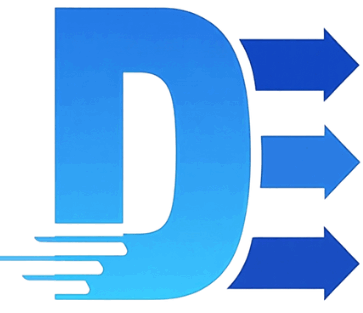
In today’s hyperconnected world, digital well-being has become a growing priority for individuals, families, and organizations. As our dependence on smartphones, apps, and online platforms continues to rise, so does the concern over screen addiction, productivity loss, and mental health. Thankfully, technology is not only the source of the challenge—it is also becoming part of the solution. The next wave of digital well-being innovations is set to redefine how we balance tech and life.
This article explores future trends in digital well-being technology, highlighting emerging tools, practices, and possibilities that aim to create healthier digital lifestyles.
1. AI-Powered Digital Well-being Assistants
Artificial Intelligence (AI) will play a central role in monitoring and managing digital habits. Unlike simple screen-time apps, AI-driven assistants can provide personalized recommendations by analyzing user behavior patterns. For instance, instead of merely warning you about extended screen time, these assistants might suggest specific activities—like going for a short walk or engaging in a mindfulness exercise.
Key aspects include:
- Smart insights based on usage trends.
- Predictive nudges that help prevent unhealthy patterns.
- Integration with wearables for holistic tracking of both physical and digital health.
2. Wearables and Biometric Feedback
Future wearables will move beyond counting steps and heartbeats to actively detect signs of digital stress. Smartwatches, glasses, or even rings may monitor stress levels through biometric signals such as heart rate variability, skin temperature, or eye strain.
Examples of possibilities:
- Detecting fatigue from excessive screen exposure.
- Alerting users when digital activity impacts sleep quality.
- Adaptive device adjustments (e.g., dimming screens when eyes show strain).
This creates a seamless loop between body awareness and responsible digital use.
3. Mindful App and Device Design
Tech companies are increasingly adopting digital well-being-first designs, and this trend will only grow. Future apps and devices may include:
- Built-in pause mechanisms to reduce addictive scrolling.
- Notification batching, where alerts arrive in focused intervals.
- Gamified well-being incentives, encouraging users to take breaks or engage offline.
By integrating mindful design at the development stage, digital platforms can help users build healthier habits without needing third-party solutions.
4. Immersive Well-being Solutions with AR and VR
Augmented Reality (AR) and Virtual Reality (VR) will transform digital wellness experiences. Instead of being perceived as distractions, immersive environments could serve therapeutic purposes.
Examples include:
- VR meditation rooms that reduce stress.
- AR-guided breathing exercises integrated into daily environments.
- Immersive therapy sessions for mental health management.
These innovations will blur the lines between technology use and self-care.
5. Digital Detox and Minimalist Tech Tools
Another rising trend is the growth of digital detox technologies. These tools help users disconnect intentionally while maintaining productivity.
- Distraction-free smartphones with limited features.
- Minimalist apps that strip away addictive elements.
- Scheduled offline modes that promote balance.
Minimalist digital tools will become more mainstream as people look for sustainable ways to reclaim focus and mental clarity.
6. Corporate Digital Well-being Programs
Organizations will increasingly prioritize employee digital well-being as part of workplace wellness initiatives. Future workplace tools may include:
- Automatic break reminders during work hours.
- AI-driven workload balancing to prevent burnout.
- Team-based digital wellness challenges.
This not only boosts productivity but also improves overall employee satisfaction and retention.
7. Data Privacy and Ethical Well-being Tech
With the growing adoption of digital well-being technologies, privacy and ethics will become critical. Users will expect tools that are transparent, secure, and respectful of personal data. Companies focusing on trust-driven solutions will lead the market.
Overview Table
| Trend | Description | Potential Impact |
|---|---|---|
| AI-Powered Assistants | Personalized digital habit tracking & nudges | Smarter self-regulation |
| Wearables & Biometrics | Stress detection via body signals | Stronger mind-body connection |
| Mindful App Design | Built-in wellness features in apps/devices | Reduced addictive behaviors |
| AR & VR Solutions | Immersive meditation and therapy experiences | Enhanced relaxation and focus |
| Minimalist Tools | Distraction-free apps & devices | Improved clarity and balance |
| Workplace Programs | Corporate-level digital wellness tools | Better productivity & morale |
Practical Steps to Prepare for These Trends
- Stay open to adopting AI-driven wellness apps as they become available.
- Consider investing in wearables that track not just fitness but also digital stress.
- Advocate for ethical tech use by choosing platforms that prioritize user well-being.
- Encourage workplaces and schools to adopt digital wellness practices.
- Experiment with digital detox routines to maintain balance.
Conclusion
The future of digital well-being technology is not about rejecting technology—it’s about reshaping it to serve human needs better. From AI assistants to AR-driven meditation spaces, the coming innovations promise to make technology more humane, mindful, and balanced. By embracing these trends thoughtfully, individuals and organizations alike can create healthier digital ecosystems that promote well-being without compromising on connectivity and productivity.
3 Best One-Line FAQs
Q1. What is digital well-being technology?
It refers to tools, apps, and devices designed to help people use technology in healthier and more mindful ways.
Q2. How will AI improve digital well-being?
AI will analyze habits and provide personalized nudges to encourage healthier tech use.
Q3. Are digital detox tools effective?
Yes, minimalist devices and apps can significantly reduce digital overload and improve focus.

